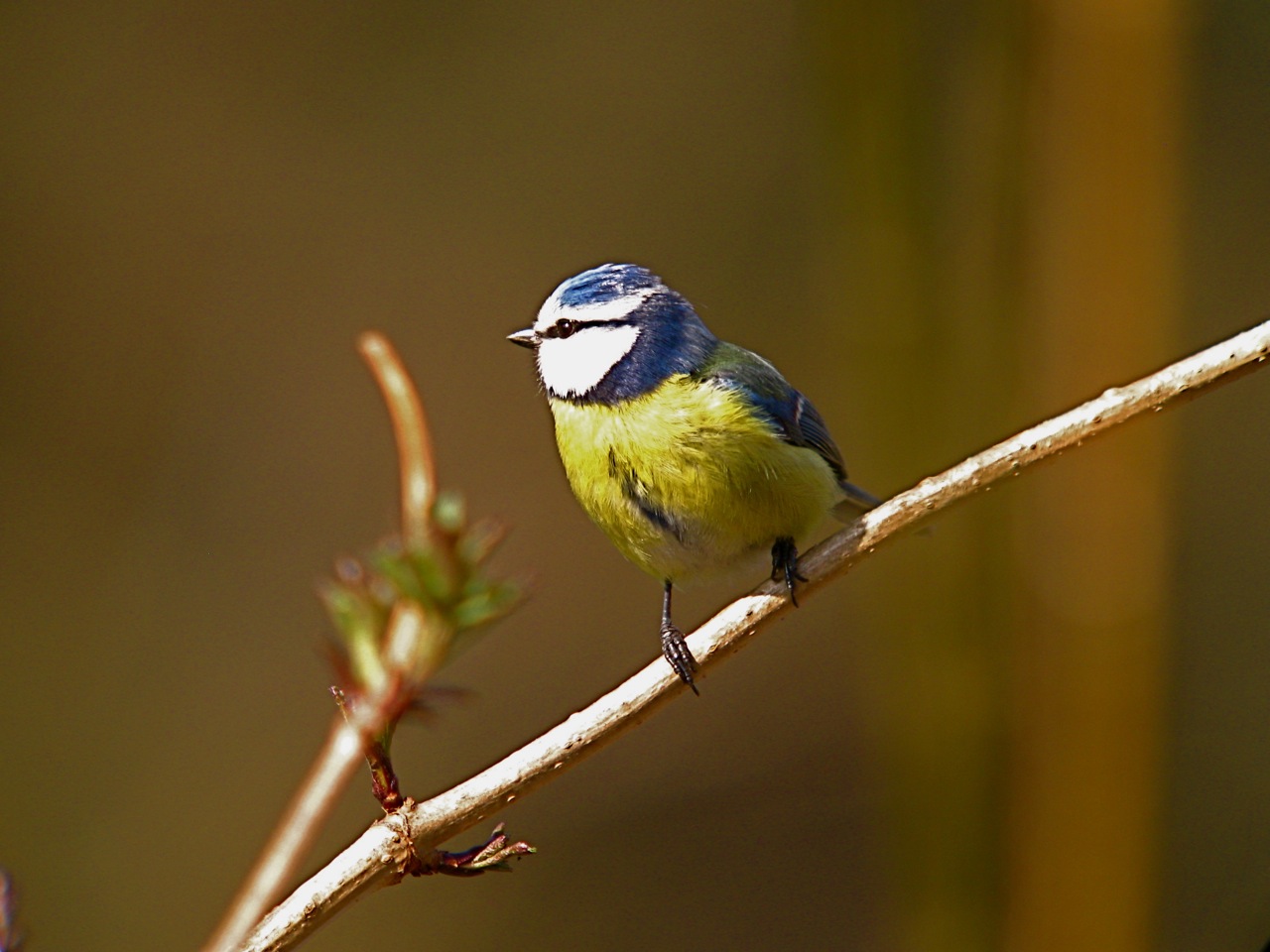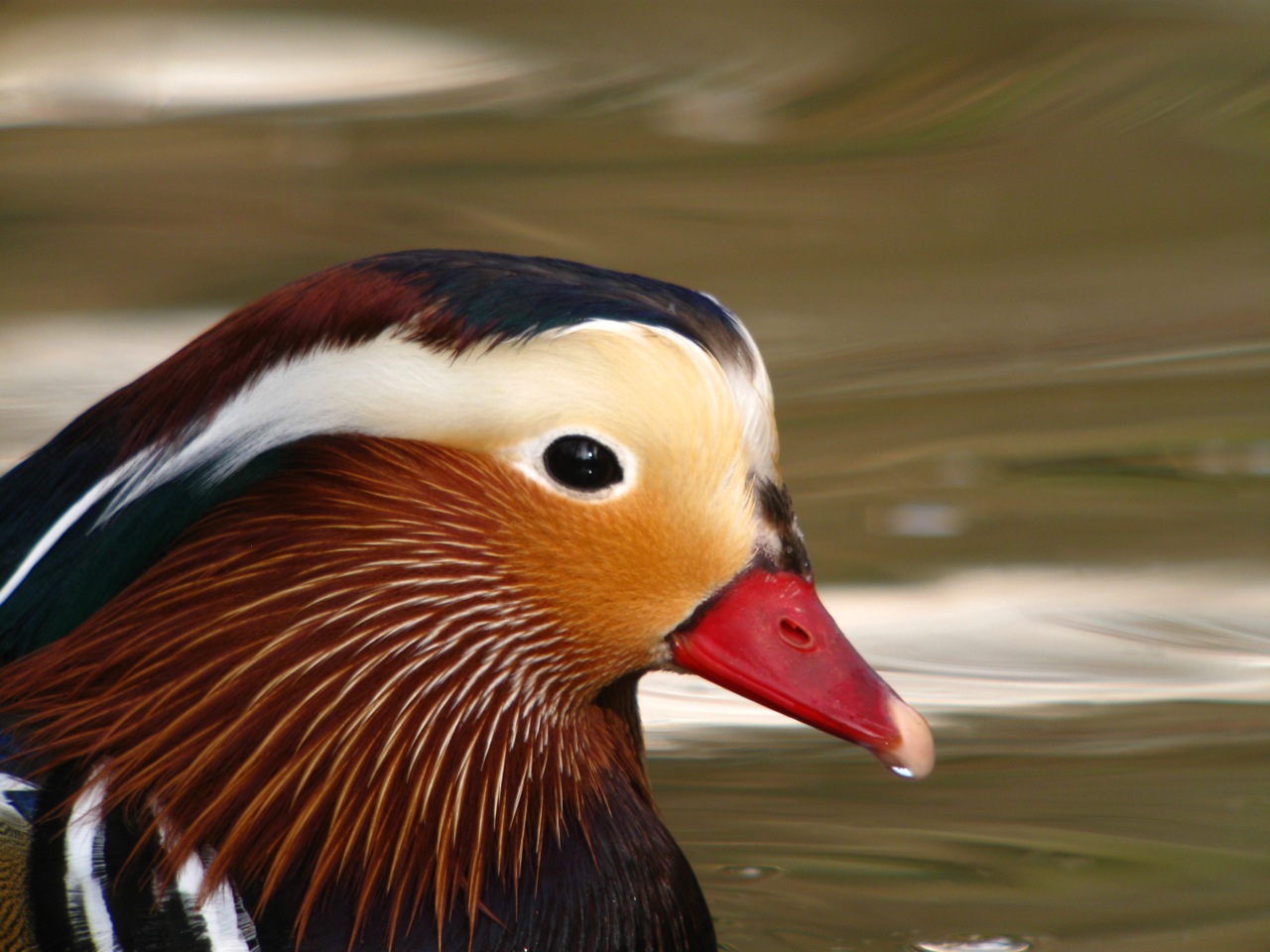Taking a photo using a good digiscoping setup is incredibly simple.Making the progression from level one to two to three takes lots of time, effort and patience; although a cup full of luck also helps. But then again, Gary Player always said that the more he practiced the luckier he got.
Taking a half decent photo with a digiscoping setup is not so easy.
Taking great photos through a digiscoping setup is flippin' hard.
But how can you possibly practice when all the little birds keep flying away?The trick is to start with larger birds and birds that tend to move in regular ways. Try going down to a local town park and taking photos of the ducks and geese. You will find that the larger birds make good photographic subjects, they tend to move about in a less frantic manner (unless, they are chasing each other about), and are not necessarily as shy as wild birds.
Choose a subject that is still. This sitting Mandarin Duck (at Schloß Ambras, just outside Innsbruck) made a great subject - he was dead still for ages, which meant that I could use a 4sec timer on my camera. This meant that there was little or no camera shake to disturb the image, even though I was forced to use a fairly slow shutter speed (1/50sec) because it was kinda dark in the tree.
When you are feeling a little more confident, find a swimming duck and try to track the duck through the water. You will probably find that the ducks move more slowly and calmly when they are just left to themselves. Making a noice to attract their attention, or throwing food, is likely to make them move faster and make your job of digiscoping them so much harder. As you are following the ducks, you will get used to focusing quickly and having your camera ready to take the shot. Try to use as little zoom as possible (particularly from your camera) as this will tend to reduce the amount of light you are able to use (slower photo=more camera shake/blur) and is likely to soften the images (unless you have a great quality lens). Don't be afraid to take lots of photos - you can always throw the poor photos away.
When you are really getting confident, you can start to look up in to the trees around the pond. Try to find a subject that is sitting relatively still and not too high up - eye-level would be great. This Blue Tit came and sat on a bush right in front of me while I was playing with the ducks:
 3. find a bird in a bush/tree somewhere near you
3. find a bird in a bush/tree somewhere near you(btw, that is what happens to a photo when you sharpen it too much in photoshop ;-)
I have another great spot to practice digiscoping techniques and get ready for spring birding, but I will leave that to my next post.
I would love to hear your comments, tips and ideas!
Happy birding
Dale Forbes












.jpg)








.jpg)



14 comments:
What stunning shots of the mandarin Dale!! WOW!! Love them.
I used to take picks of birds too when I still had my old 35mm and 500mm lens, but now I have discovered bugs and digital!! :)
Hi Dale,
That is nice to give some advices like that, especially when they are illustrated by awesome pictures
Wow, you are a SERIOUS photographer!! Fantastic shots of these beautiful birds!!
and...thanks for the happy birthday:)
I used to take picks of birds too when I still had my old 35mm and 500mm lens, but... then a water disaster happened and I discovered the joy of not seeing the world through a[n addictive] camera lens. after a short respite in to photographing sceneries, children, bugs, and very big sharks; digiscoping was my next big trip down photography lane. mostly because I had a digital camera and a telescope for observation anyway. it seemed like a logical venture.
Chris, you are the photo master. I just try ;-)
Hi Sharon, and welcome to the Alps! I am not serious about much. but if you mean that I spend lots of time with my nose somewhere near a shutter release button then you have got me right on the money!
About that shark thing - was it off the Durban coast, Mozambique? Diving is one of the few things I have never tried and it definitely looks like fun. I love the colours of the coral reefs and fishes. That is a whole new ball game as far as photography is concerned.
i learnt to scuba dive with the wits underwater club in a smelly hole just south of joburg and quickly got in to playing in the big waves and currents of the kzn coast (i had grown up playing on those waves after all).
I spent 2006 and 2007 doing research on whale sharks on the island of Utila (Honduran Caribbean), before making a brief stop through SA to play with the raggies, tigers and blacktips, before heading to the alps to look for the mysterious and very elusive (i.e. completely unknown and new to science) Alpine stream shark.
I have yet to be successful, but if you dont try, you will never be successful!
You are really a Guru, Dale. Your photos are so fascinating to look at. I really love them so much.
Hi Dale. Great tips as usual & accompanied by excellent images.
Accurate focusing & keeping the whole 'rig' absolutely still is my main objective. Moving objects, well that's for another day (that's why I recently spent money on a DSLR). Keep practising & try to curb the frustration.
Cheers Frank.
PS. Word verification = "bagalist". Is that a new birding term?
Sounds fantastic Dale. I hope you find it. What makes you think it exists? Those Whale sharks are beautilful but after going to the show at the Sharks Board, I am not sure I want to go playing with the raggies. You can see where they got their name. :)
Having some absolutely brilliant birds to digiscope, as you do, doesn't hurt either. Superb images Dale.
haha Frank. I have not heard the use of bagalist in birding circles. I just assumed it was someone who was a strong supporter of the Bagals (a fairly common family name of the Indian and Pakistani Punjab).
http://photography.bagal.in/
might be the first official bagalist website
Sharks are wonderfully fascinating Joan. if you are ever in Durban then you HAVE TO go to dinner at the Cargo Hold restaurant at Ushaka. Normally about 3 big Raggies (Sand Tigers for those uninformed in Sufafikin English) in the tank right alongside the dining tables. Raggies are the very docile and spend most of their time trying to hide from anything that moves (but mostly white sharks - which is why they migrate up to the KZN coast to breed)
John, thank you for stopping by again, always a pleasure to have you. The thing is that there are brilliant birds everywhere in the world, you just have to be open to seeing them. An Indian Myna in South Africa is a pest species, but can make a great photographic subject (at least to practice on ;-)
Wow!, Beautiful pictures here and thanks for the lesson.
This is excellent post, it’s amazing. Thanks for writing this topic, with so many details. Very useful suggestions.
Awesome close ups. Beautiful duck!! I wonder if that "digiscope" stuff would work from a window?? Is it the same as a zoom lens??? I've been thinking about getting a lens for my camera to see further into the woods. Thanks for the tips Dale!!
Post a Comment